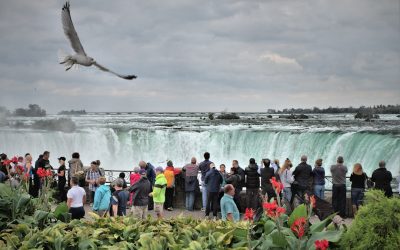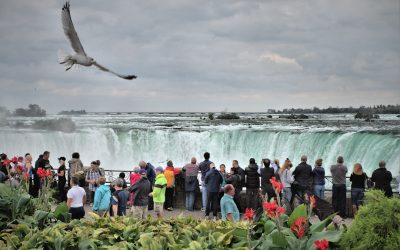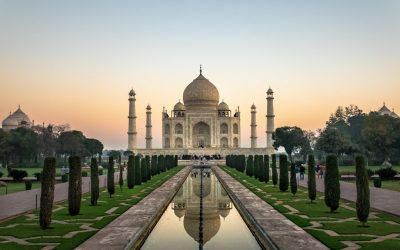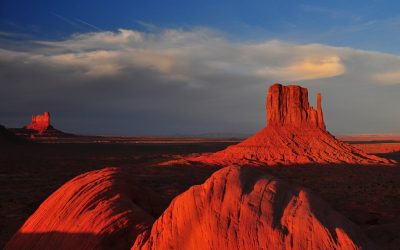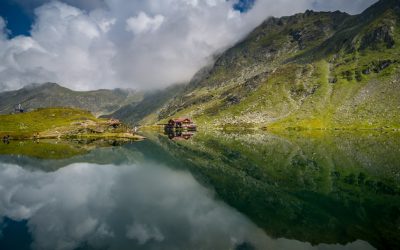Explore the World Through Geography, Natural Resources & Daily History
Clear, reliable and engaging guides that help you understand our planet — from UK geography education to global natural resources and On This Day history events.
Explore, discover, and learn about the wonders of our world! At Earth Site, we’re passionate about bringing geography, history, and science to life for curious minds of all ages. Whether you’re delving into historical events, uncovering the mysteries of the natural world, or seeking interactive resources, you’re in the right place.
Here, you can uncover the stories behind historical events, explore the natural wonders of our planet, and gain valuable insights into how the Earth’s systems shape our daily lives. From the towering peaks of mountain ranges to the far-reaching impacts of human innovation, we aim to make every topic both engaging and informative.
Start your journey of discovery with us today, and let’s make learning an adventure!
What We Cover
Earth Site brings together engaging and accessible educational content designed to help you understand the world, its history, and its natural systems.
🌍 Geography Education (UK & Worldwide)
We publish clear, easy-to-understand geography resources for students, teachers and curious learners. Our guides support geography education in the UK and cover physical geography, climate, ecosystems, population, and global development.
⛏️ Natural Resources & Environmental Geography
Explore detailed country profiles covering natural resources, mining, energy, geology and global environmental challenges. We show how nations manage minerals, water, land and ecosystems, and why these resources matter.
📅 On This Day in History
Every day has a story. Our On This Day history series features major events, anniversaries, traditions, and cultural milestones from around the world — with timelines, context, and fun facts.
TIMELINE
New Mexico
New Mexico, also known as the Land of Enchantment, is a state in the southwestern region of the United States. It is a popular travel destination for its diverse attractions and unique culture. From its rich Native American and Hispanic heritage to its stunning natural landscapes, New Mexico offers something for every type of traveler. Summary New Mexico is a land of enchantment with a rich cultural heritage, natural wonders, unique cuisine, art and architecture, fascinating history, and a thriving economy. The state’s cultural heritage is a blend of Native American, Spanish, and Mexican influences, reflected in its art, architecture, and cuisine. Natural wonders in New Mexico include the Carlsbad Caverns, White Sands National Monument, and the Rio Grande Gorge. The best places to visit in New Mexico include Santa Fe, Taos, Albuquerque, and Roswell. New Mexico’s unique cuisine features dishes like green chile stew, enchiladas, and sopapillas. The Rich Cultural Heritage of New Mexico One of the most fascinating aspects of New Mexico is its rich cultural heritage. The state is home to a large Native American population, with 23 different tribes residing within its borders. These tribes have a deep connection to the land and have preserved their traditions and customs for centuries. In addition to the Native American influence, New Mexico also has a strong Hispanic heritage. The state was once part of Mexico before becoming a territory of the United States, and this history is still evident in its architecture, cuisine, and language. Traditional arts and crafts are an important part of New Mexico’s cultural heritage. The state is known for its pottery, weaving, and...
New Jersey
New Jersey, also known as the Garden State, is a state located in the northeastern part of the United States. It is bordered by New York to the north and east, Pennsylvania to the west, and Delaware to the southwest. With a population of over 9 million people, it is the 11th most populous state in the country. Despite its small size, New Jersey is known for its diverse landscapes, vibrant culture, and rich history. The nickname “Garden State” originated in the 19th century when New Jersey was known for its agricultural industry. The state’s fertile soil and moderate climate made it ideal for farming, and it became a major producer of fruits and vegetables. Today, while New Jersey is no longer primarily an agricultural state, the nickname still reflects its commitment to preserving green spaces and promoting environmental sustainability. Summary New Jersey is known as the Garden State and is located on the east coast of the United States. The state has a rich history and culture, including being the birthplace of Frank Sinatra and the site of the first organized baseball game. Top tourist attractions in New Jersey include the Atlantic City Boardwalk, Liberty State Park, and the Cape May Lighthouse. Some of the best beaches in New Jersey include Ocean City, Wildwood, and Cape May. Exploring the great outdoors in New Jersey can include hiking in the Delaware Water Gap, skiing in the Pocono Mountains, and visiting the Great Swamp National Wildlife Refuge. History and Culture of New Jersey New Jersey has a rich history that dates back to before European colonization. The area was originally...
New Hampshire
New Hampshire, also known as the Granite State, is a small but significant state located in the New England region of the United States. It is bordered by Massachusetts to the south, Vermont to the west, Maine and the Atlantic Ocean to the east, and Canada to the north. Despite its small size, New Hampshire has played a significant role in American history and continues to be a popular destination for tourists and those seeking a high quality of life. The nickname “The Granite State” comes from the abundance of granite rock formations found throughout the state. In fact, New Hampshire is known for having some of the largest granite quarries in the world. This granite has been used in many famous structures, including the Library of Congress and the Statue of Liberty. New Hampshire also holds a special place in American history. It was one of the original thirteen colonies and played a crucial role in the American Revolution. The state’s motto, “Live Free or Die,” reflects its independent spirit and commitment to individual liberty. Summary New Hampshire is known as the Granite State due to its abundance of granite rock formations. New Hampshire was one of the original 13 colonies and became a state in 1788. The state is home to the White Mountains, Lake Winnipesaukee, and the White Mountain National Forest. New Hampshire experiences all four seasons, with warm summers and cold winters. The state’s economy is driven by agriculture, manufacturing, and tourism, with top-ranked schools and universities. History of New Hampshire: From Colonization to Statehood New Hampshire was first settled by Europeans in the early...
Nevada
Nevada, also known as the Silver State, is a state located in the western region of the United States. It is bordered by Oregon to the northwest, Idaho to the northeast, California to the west, Arizona to the southeast, and Utah to the east. With an area of approximately 110,577 square miles, Nevada is the 7th largest state in terms of land area. The state’s capital is Carson City, while its largest city is Las Vegas. The nickname “Silver State” comes from Nevada’s rich history of silver mining. In the mid-19th century, silver was discovered in the state, leading to a silver rush and a boom in mining activity. Nevada quickly became one of the leading producers of silver in the United States. The nickname not only reflects the state’s historical significance in silver mining but also symbolizes its wealth and prosperity. Summary Nevada is known as the Silver State due to its rich mining history. The state has a diverse geography, including deserts, mountains, and lakes. Nevada experiences hot summers and cold winters, with low humidity throughout the year. The economy of Nevada is heavily reliant on tourism, mining, and gaming industries. Nevada has a vibrant culture, with art, music, and festivals celebrated throughout the state. History of Nevada: From Wild West to Modern Times Nevada has a fascinating history that dates back thousands of years. The area that is now Nevada was originally inhabited by Native American tribes such as the Paiute, Shoshone, and Washoe. These tribes lived off the land and had a deep connection to the natural resources of the region. In the mid-19th century,...
Nebraska
Nebraska, also known as the Cornhusker State, is a landlocked state located in the Midwestern region of the United States. It is bordered by six states – South Dakota to the north, Iowa to the east, Missouri to the southeast, Kansas to the south, Colorado to the southwest, and Wyoming to the west. Nebraska is known for its vast agricultural lands and is often referred to as the “breadbasket of America”. Agriculture plays a crucial role in the state’s economy, making it one of the leading producers of corn and beef in the world. Summary Nebraska is known as the Cornhusker State due to its vast corn production. The state has a diverse geography, ranging from prairies to sand dunes and even a small mountain range. Nebraska has a rich history, with Native American tribes and pioneers shaping its development. Agriculture is a major industry in Nebraska, with corn and beef being the top products. Visitors can enjoy the state’s natural beauty through its national parks and wildlife reserves. Geography and Climate of Nebraska Nebraska covers an area of approximately 77,354 square miles, making it the 16th largest state in the United States. The state is characterized by its diverse topography, ranging from rolling hills in the east to the Great Plains in the west. The eastern part of Nebraska is home to fertile farmland, while the western part consists of grasslands and sandhills. The climate in Nebraska varies from humid continental in the east to semi-arid in the west. Summers are typically hot and humid, with temperatures often reaching into the 90s Fahrenheit. Winters are cold and can...
Montana
Montana, also known as “The Treasure State,” is a state located in the western region of the United States. It is the fourth largest state in terms of land area and has a population of approximately one million people. Montana is known for its stunning natural beauty, diverse wildlife, and rich history. The state got its nickname due to its abundance of natural resources, including gold, silver, copper, and coal. Summary Montana is known as the Treasure State and boasts a rich history, diverse geography, and unique cuisine. From mountains to plains, Montana’s geographical features offer a variety of outdoor activities such as hiking, fishing, and skiing. Montana’s history is deeply rooted in Native American culture and the cowboy way of life. Montana is a nature lover’s paradise with an abundance of wildlife and natural wonders, including Glacier National Park and Yellowstone. Montana’s economy is driven by agriculture, mining, and tourism, with famous landmarks such as Glacier National Park and Yellowstone attracting visitors from around the world. Montana’s Geographical Features Montana is home to a diverse landscape that includes the majestic Rocky Mountains, vast plains, and numerous rivers and lakes. The Rocky Mountains dominate the western part of the state, providing breathtaking views and opportunities for outdoor activities such as hiking, skiing, and mountain climbing. The eastern part of Montana consists of the Great Plains, which are characterized by rolling hills and grasslands. Montana is also home to several national parks and wilderness areas, including Glacier National Park and Yellowstone National Park. Glacier National Park is known for its stunning glaciers, pristine lakes, and abundant wildlife. Yellowstone National Park...
Missouri
Located in the heart of the United States, Missouri is often referred to as the “Gateway to the West.” This nickname is not without reason, as Missouri played a crucial role in the westward expansion of the country. Situated between the Mississippi River and the Missouri River, the state served as a starting point for pioneers and explorers venturing into the unknown territories of the American West. Summary Missouri is known as the Gateway to the West, due to its location as a crossroads for trade and travel. Missouri has a rich history, from the Lewis and Clark expedition to its role in the Civil War. The geography of Missouri is diverse, with the Ozark Mountains and the Mississippi River among its notable features. Missouri has a vibrant culture, with a strong tradition of music, art, and literature. The economy of Missouri is driven by agriculture, manufacturing, and tourism, with many opportunities for growth and development. The History of Missouri: From Lewis and Clark to the Civil War Missouri’s history is deeply intertwined with the westward expansion of the United States. In 1804, the famous Lewis and Clark expedition set off from St. Louis, Missouri, on their journey to explore the newly acquired Louisiana Purchase. This expedition opened up new opportunities for trade and settlement in the West, and Missouri became a key hub for these activities. However, Missouri’s history is not without its dark moments. During the mid-19th century, tensions between pro-slavery and anti-slavery factions escalated, leading to violent conflicts. Missouri was a border state during the Civil War, with residents divided in their loyalties. The state saw...
Mississippi
Mississippi, also known as the Magnolia State, is located in the southern region of the United States. It is bordered by Tennessee to the north, Alabama to the east, Louisiana to the south, and Arkansas to the west. The state’s nickname, the Magnolia State, comes from the abundance of magnolia trees that can be found throughout its landscape. Mississippi’s state symbols include the magnolia flower as the state flower, the mockingbird as the state bird, and the magnolia tree as the state tree. Summary Mississippi is known as The Magnolia State and is located in the southern United States. The state has a rich history, from Native American settlements to the Civil Rights Movement. Mississippi boasts natural beauty, including rivers, forests, and beaches. The state has a vibrant cultural heritage, with music, art, and literature playing a significant role. Mississippi has produced many famous residents, including writers, musicians, and athletes. History of Mississippi: From Native American Settlements to Civil Rights Movement Mississippi has a rich and complex history that dates back thousands of years. Before European settlers arrived, the area was inhabited by various Native American tribes, including the Choctaw, Chickasaw, and Natchez. These tribes had established thriving communities and had developed their own unique cultures and traditions. In the 16th century, European explorers began to arrive in Mississippi, with Spanish and French explorers being among the first. The French established settlements along the Gulf Coast and along the Mississippi River. The area became a French colony known as La Louisiane. Mississippi played a significant role in the Civil War and Reconstruction era. As a southern state, it seceded...
Minnesota
Minnesota, also known as the North Star State, is a state located in the Midwestern region of the United States. It is known for its beautiful landscapes, friendly people, and vibrant culture. In this blog post, we will explore the many attractions and unique aspects of Minnesota that make it a must-visit destination. Whether you are interested in exploring the great outdoors, immersing yourself in arts and culture, or cheering on your favorite sports team, Minnesota has something for everyone. Summary Minnesota is known as the Land of 10,000 Lakes, making it a popular destination for water activities and scenic views. From Native American settlements to modern times, Minnesota has a rich history that can be explored through various museums and historical sites. Minnesota’s state parks and wildlife offer opportunities for hiking, camping, and wildlife watching. The state’s arts and culture scene is thriving, with museums, theatres, and festivals showcasing local talent and international works. Minnesota’s food and drink scene is diverse, with classic diners, craft breweries, and farm-to-table restaurants offering something for everyone. Minnesota: The Land of 10,000 Lakes Minnesota is often referred to as the Land of 10,000 Lakes, and for good reason. The state is home to an abundance of lakes, rivers, and waterways that play a significant role in its culture and economy. The nickname actually underestimates the number of lakes in Minnesota, as there are actually over 11,000 lakes scattered throughout the state. The lakes in Minnesota provide endless opportunities for outdoor recreation such as fishing, boating, swimming, and kayaking. They also serve as a habitat for a diverse range of wildlife and contribute...
Michigan
Michigan, also known as the Great Lakes State, is located in the Midwestern region of the United States. It is surrounded by four of the five Great Lakes, making it the only state to have such a unique geographical feature. The state’s nickname, the Great Lakes State, highlights the importance of these lakes to Michigan’s identity. The Great Lakes not only provide stunning natural beauty but also play a crucial role in Michigan’s economy and recreational activities. Summary Michigan is known as The Great Lakes State due to its location on the shores of four of the five Great Lakes. Michigan has a rich history and culture, including being the birthplace of the automotive industry and Motown music. Michigan’s natural beauty includes stunning landscapes such as Sleeping Bear Dunes National Lakeshore and Pictured Rocks National Lakeshore. Michigan’s economy is diverse, with industries such as manufacturing, agriculture, and tourism contributing to its success. Michigan is home to world-class institutions and programs, including the University of Michigan and Michigan State University. Michigan’s Rich History and Culture Michigan has a rich history that dates back thousands of years. Before European colonization, the area was inhabited by various Native American tribes, including the Ojibwe, Odawa, and Potawatomi. These tribes had a deep connection to the land and waterways of Michigan, relying on them for sustenance and trade. In the 17th century, French explorers arrived in Michigan and established settlements along the St. Lawrence River and the Great Lakes. The French influence can still be seen today in place names and cultural traditions. However, control of Michigan was later transferred to the British during...
Massachusetts
Massachusetts, located in the New England region of the United States, is a state known for its rich history, vibrant culture, and stunning natural beauty. It is bordered by the Atlantic Ocean to the east and is surrounded by the states of New Hampshire, Vermont, Connecticut, Rhode Island, and New York. With an area of approximately 10,554 square miles, it is the 7th smallest state in the country. Massachusetts is often referred to as the “Bay State” due to its numerous bays and harbors along its coastline. The state’s official nickname is “The Commonwealth of Massachusetts,” highlighting its status as a self-governing entity. The state symbols include the Mayflower as the state flower, the American Elm as the state tree, and the chickadee as the state bird. The population of Massachusetts is approximately 6.9 million people, making it the 15th most populous state in the country. The capital and largest city is Boston, which is known for its rich history and vibrant cultural scene. Other major cities in Massachusetts include Worcester, Springfield, Lowell, and Cambridge. Summary Massachusetts is a state with a rich history, diverse population, and thriving economy. From the Pilgrims to the present day, Massachusetts has played a significant role in American history. The state’s natural beauty includes beaches, mountains, and forests, making it a great destination for outdoor enthusiasts. Massachusetts is home to world-class schools and universities, making it a hub for innovation and research. Visitors can enjoy cultural attractions such as museums and landmarks, as well as sports and recreation activities like skiing and baseball. The History of Massachusetts: From the Pilgrims to the Present...
Maryland
Maryland, located in the Mid-Atlantic region of the United States, is a state with a rich history and diverse geography. It is bordered by Pennsylvania to the north, Delaware and the Atlantic Ocean to the east, Virginia and West Virginia to the south, and Washington D.C. to the west. The state’s geography varies from coastal plains to rolling hills and mountains in the west. Maryland has played a significant role in American history. It was one of the original 13 colonies and was founded in 1634 as a refuge for English Catholics. The state was named after Queen Henrietta Maria, wife of King Charles I of England. During the American Revolution, Maryland was known as the “Old Line State” because of its strong support for the Continental Army. It also played a crucial role in the Civil War, with battles such as Antietam and Gettysburg taking place on its soil. Summary Maryland is a state located in the Mid-Atlantic region of the United States with a rich history dating back to the colonial era. The state’s economy is diverse, with major industries including healthcare, biotechnology, and manufacturing, and a strong job market in fields such as education and government. Maryland is home to several prestigious universities, including Johns Hopkins University and the University of Maryland, as well as a number of highly regarded public and private schools. The state boasts a robust healthcare system, with top-rated hospitals and medical centers serving both residents and visitors. Maryland’s transportation infrastructure includes a network of highways, railways, and airports, making it easy to get around the state and beyond. Maryland’s Economy: Industries...

